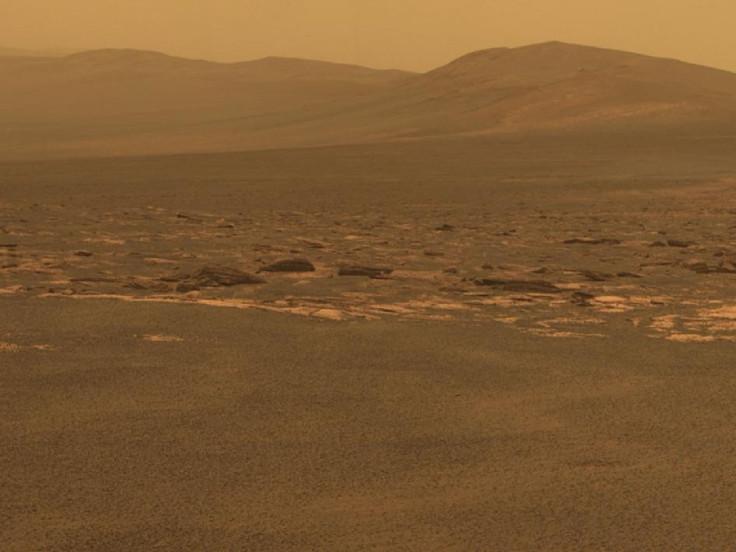Mars Rover Find Suggests Conditions Hospitable to Life

Opportunity, the resilient Mars rover that has been exploring the planet for seven years now, recently arrived at the massive Endeavour crater and discovered a rock that hints at an ancient water source and a once warmer plant.
The first rock Opportunity examined contained zinc and bromine, elements that on Earth could indicate that rocks were shaped heat and water. For scientists, that offered a tantalizing suggestion that Mars -- now cold, barren and incapable of supporting life -- might have once boasted a warmer, wetter climate.
This rock doesn't look like anything we've ever seen on Mars, said Steve Squyres, Cornell astronomer and the rover's chief scientist. It contains much more zinc and bromine than we've ever seen -- clues that we may be dealing with a hydrothermal system here on Mars.
We may be dealing with a situation where water has percolated or flowed -- somehow moved through these rocks, maybe as vapor, maybe as liquid, don't know yet -- but has enhanced the zinc concentration in the rock to levels far in excess of anything that we have seen on Mars before.
The rover will also explore the crater's rim, where scientists have found indications of clay deposits that would have required water to form.
Opportunity had been in transir from the smaller Victoria crater since August 2008. The two craters are only about seven miles apart, but Opportunity had to take a more circuitous route to avoid hazards. It also paused periodically to check for obstacles and drove backwards part of the way in an effort to reduce wear and tear on its wheels. It's a little worse for the wear, but chief engineer John Callas said it would endure.
We have some arthritis in one steering arm, Callas said, and a bit of paralysis in the neurological system, but our cholesterol level is excellent.
© Copyright IBTimes 2025. All rights reserved.





















